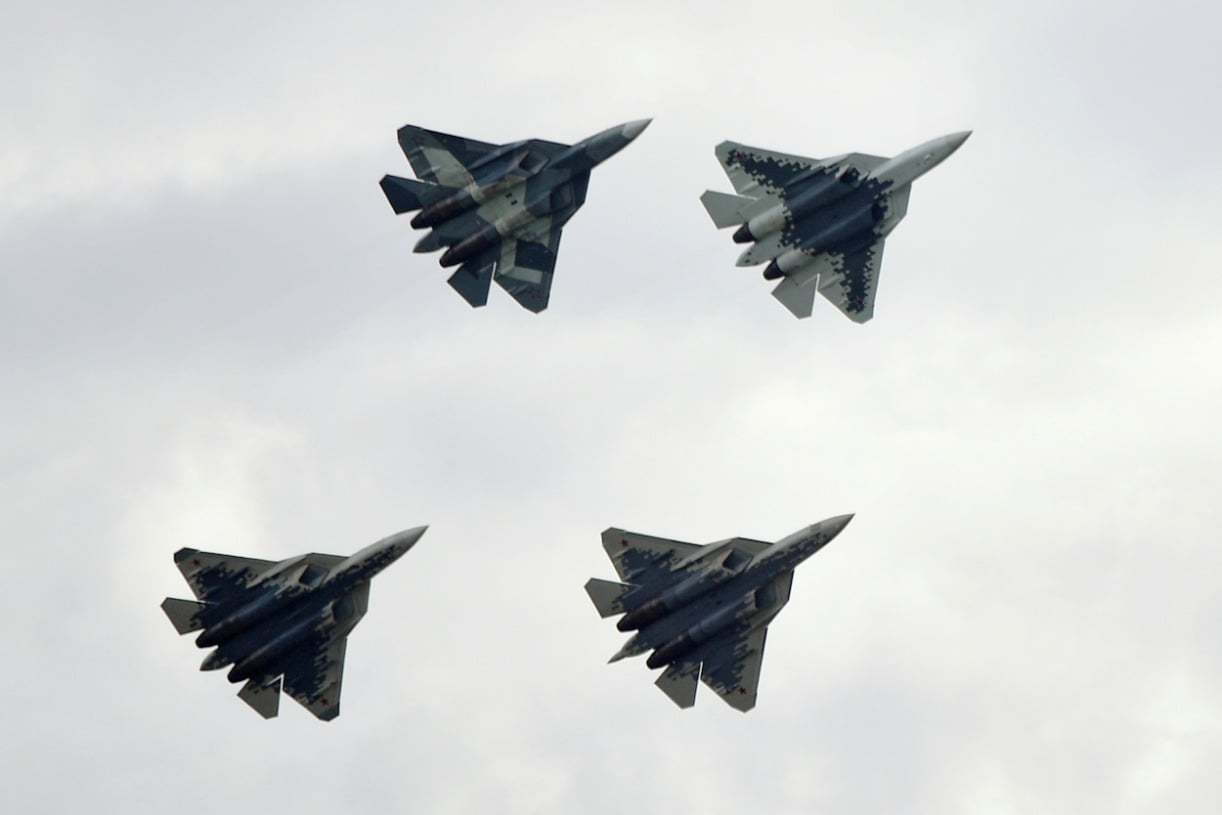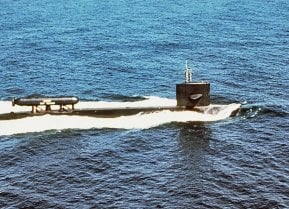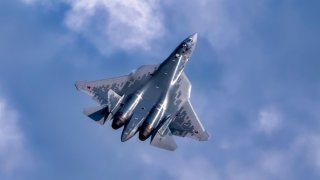Russia's Su-57 Felon Just 'Broke Cover' Armed with Some Dangerous Cruise Missiles
Recent footage shows Russia's Sukhoi Su-57 Felon stealth fighter operating near the frontlines of the Russo-Ukrainian War with two externally mounted KH-59M2 cruise missiles. This is unusual because carrying weapons externally compromises the aircraft's stealth capabilities by increasing its radar cross-section.
What You Need to Know: Recent footage shows Russia's Sukhoi Su-57 Felon stealth fighter operating near the frontlines of the Russo-Ukrainian War with two externally mounted KH-59M2 cruise missiles. This is unusual because carrying weapons externally compromises the aircraft's stealth capabilities by increasing its radar cross-section.

-Analysts like Steve Brown suggest this could indicate a shortage of internally carried, more expensive missiles, or that Russia believes it has achieved air superiority, reducing the need for stealth.
-Operating with external weapons increases the risk of detection, which is significant given the limited number of Su-57s Russia has produced due to sanctions and production challenges.
The Su-57 Felon Is Looking Quite Dangerous
New footage, posted online last week, showed the Sukhoi Su-57 Felon operating with two externally-placed KH-59M2 cruise missiles. The Su-57, which was flying near the frontlines of the Russo-Ukraine War, raised eyebrows for carrying the missiles externally. Typically, fifth-generation stealth aircraft carry their weapons internally, to reduce the aircraft’s radar cross-section (RCS).
“Carrying missiles on external weapons pylons compromises the aircraft’s reduced radar reflectivity and, therefore, its ability to operate in a high-threat environment,” Steve Brown reported.
Why the External Pylons on the Su-57?
What’s especially odd about the Su-57 operating with external weapons is that the Su-57 doesn’t have to operate with external weapons; the Su-57 has two internal bays that accommodate a modified version of the KH-59 cruise missile. The modified version of the KH-59 was compromised to fit inside an internal weapons bay, resulting in a smaller size, lower maximum range, and weaker warhead.
“It could be that the Russian forces simply have a shortage of the internally carried, far more expensive missiles, but still want to deploy the Felon, for which external hardpoints are available,” Brown reported.

Or, possibly, Ukraine’s air defense systems have been compromised to the point where stealth features are no longer necessary to successfully operate in-theater. Russia may have achieved something like air superiority, at least to the point where their non-stealth fighters can survive, thanks to a significant reduction in Ukrainian radar, fighter aircraft, and surface-to-air missile (SAM) presence.
If air superiority has been achieved, operating with the larger, more powerful (non-internal) KH-59M2 would be the logical choice.
Or, “it could simply be a choice of combining a lower-cost weapon with great lethality,” Brown wrote.
Yet, regardless of the reasoning, operating the Su-57 with external missiles carries an enhanced degree of risk; the chances of the aircraft being detected are heightened. And given the trouble Russia has had producing the Su-57, any increased risk to a single airframe is significant; to date, the Russians have only been able to build thirty-two of their fifth-generation fighters.

For a jet that first flew fourteen years ago that is a glacial production rate. And production rates are not improving; Western sanctions have complicated Russia’s ability to build more Su-57s.
Russia has been able to work around some of the sanctions, however. Recently, Russia “acquired equipment for automated workstations to aid in the calibration and laboratory testing of specialized devices like the MPPU-50,” Bokyo Nikolov reported. Also, the Russians are believed to have procured a German-made Siemens KLE 360 CNC, a tool used for precise manufacturing.
So, possibly, Russia’s efforts to continue producing the Su-57 are ongoing, and successful despite the sanctions, making deployment of the airframe to the frontlines more acceptable.
About the Author: Harrison Kass
Harrison Kass is a defense and national security writer with over 1,000 total pieces on issues involving global affairs. An attorney, pilot, guitarist, and minor pro hockey player, Harrison joined the US Air Force as a Pilot Trainee but was medically discharged. Harrison holds a BA from Lake Forest College, a JD from the University of Oregon, and an MA from New York University. Harrison listens to Dokken.
Image Credit: Creative Commons and/or Shutterstock.


